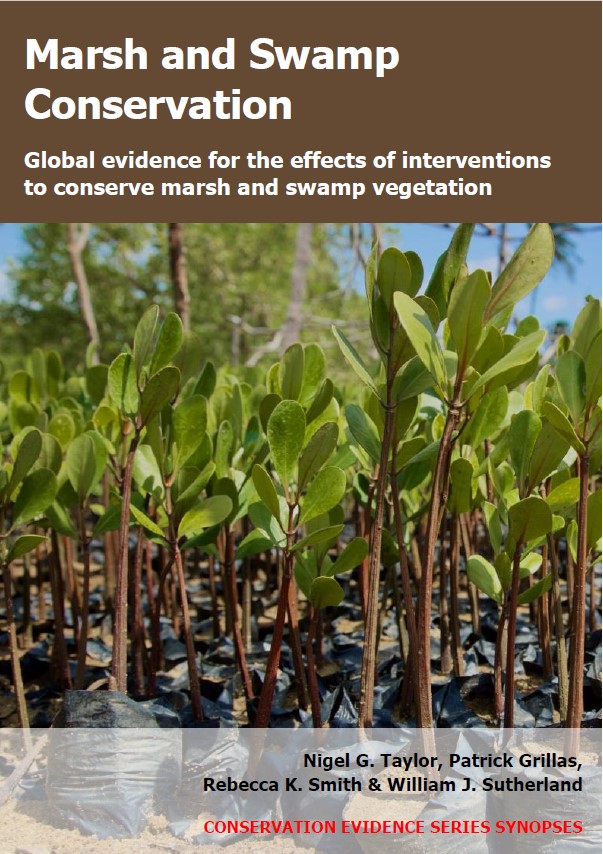Use cutting to control problematic large trees/shrubs: brackish/salt marshes
-
Overall effectiveness category Unknown effectiveness (limited evidence)
-
Number of studies: 1
View assessment score
Hide assessment score
How is the evidence assessed?
-
Effectiveness
60% -
Certainty
30% -
Harms
0%
Study locations
Supporting evidence from individual studies
A controlled, before-and-after study in 2012–2014 in a salt marsh colonized by mangrove trees in Texas, USA (Guo et al. 2017) reported that clearing patches of mangrove vegetation increased cover of salt marsh vegetation (when >50% was cleared) and increased variation in plant community composition (when any amount was cleared). Statistical significance was not assessed. Before intervention, all plots were dominated by black mangrove Avicennia germinans, with <1–19% total cover of salt marsh plant species. After two years, plots where more than half of the mangrove vegetation had been cleared developed greater total cover of salt marsh plant species (28–80%) than an uncleared plot (16%). Plots where less than half of the mangrove vegetation had been cleared retained similar total cover of salt marsh plant species (3–21%) to the uncleared plot. In seven of nine cleared plots, the variation in plant community composition between quadrats was greater than in the uncleared plot – with particularly high variation when 80–90% of the mangrove vegetation was cleared (data reported as a similarity index). Methods: Ten 1,008-m2 plots were established in a degraded coastal salt marsh. In summer 2012, mangrove trees were cut and removed from a variable number of 9-m2 cells within each plot, leaving 0–100% of the mangrove vegetation remaining. The cells were re-cut every 3–4 months. Cover of every plant species was visually estimated along a transect (1 m wide) spanning the length of each plot, before mangrove cutting began (June 2012) and approximately two years after (August 2014).
Study and other actions tested
Where has this evidence come from?
List of journals searched by synopsis
All the journals searched for all synopses
This Action forms part of the Action Synopsis:
Marsh and Swamp Conservation
Marsh and Swamp Conservation - Published 2021
Marsh and Swamp Synopsis





)_2023.JPG)














